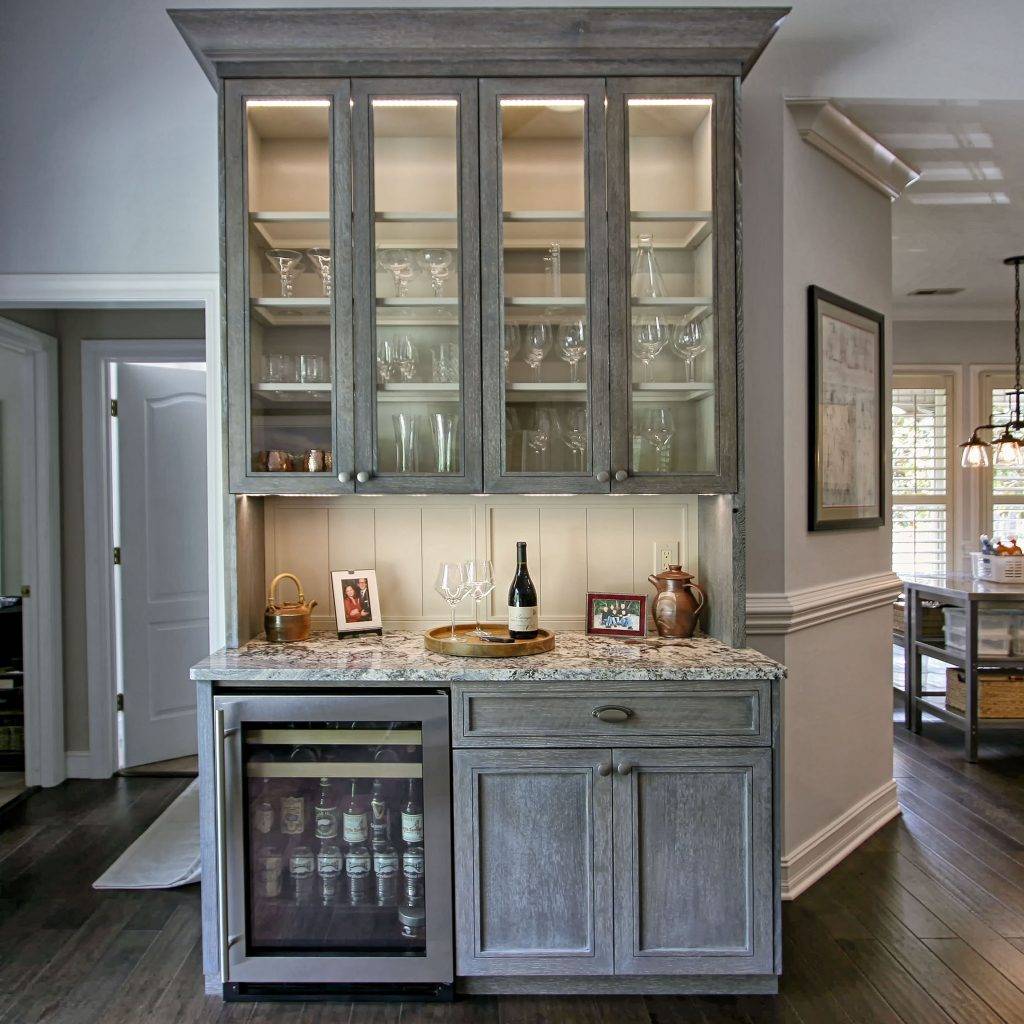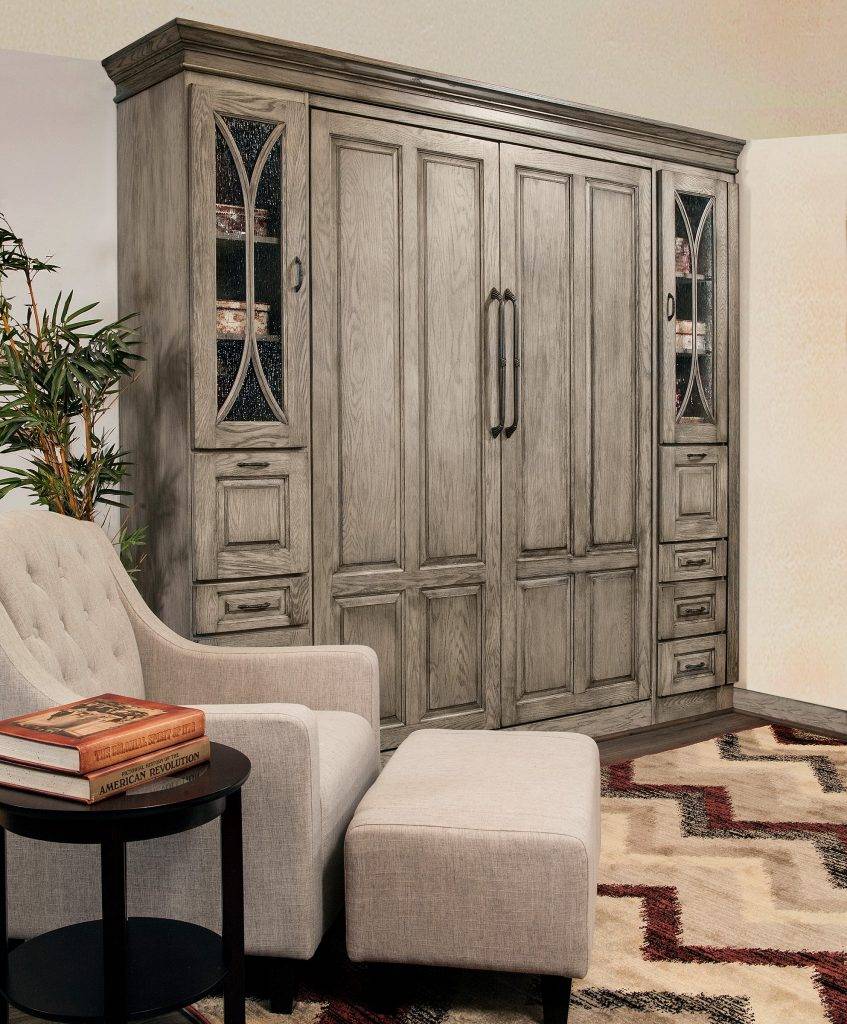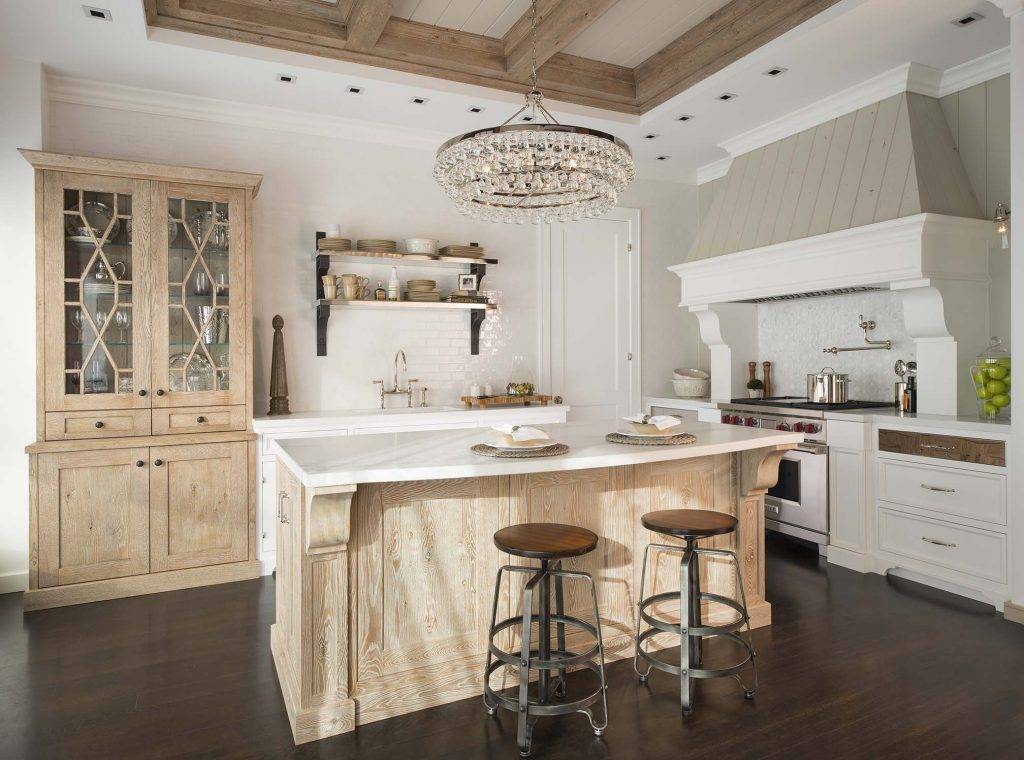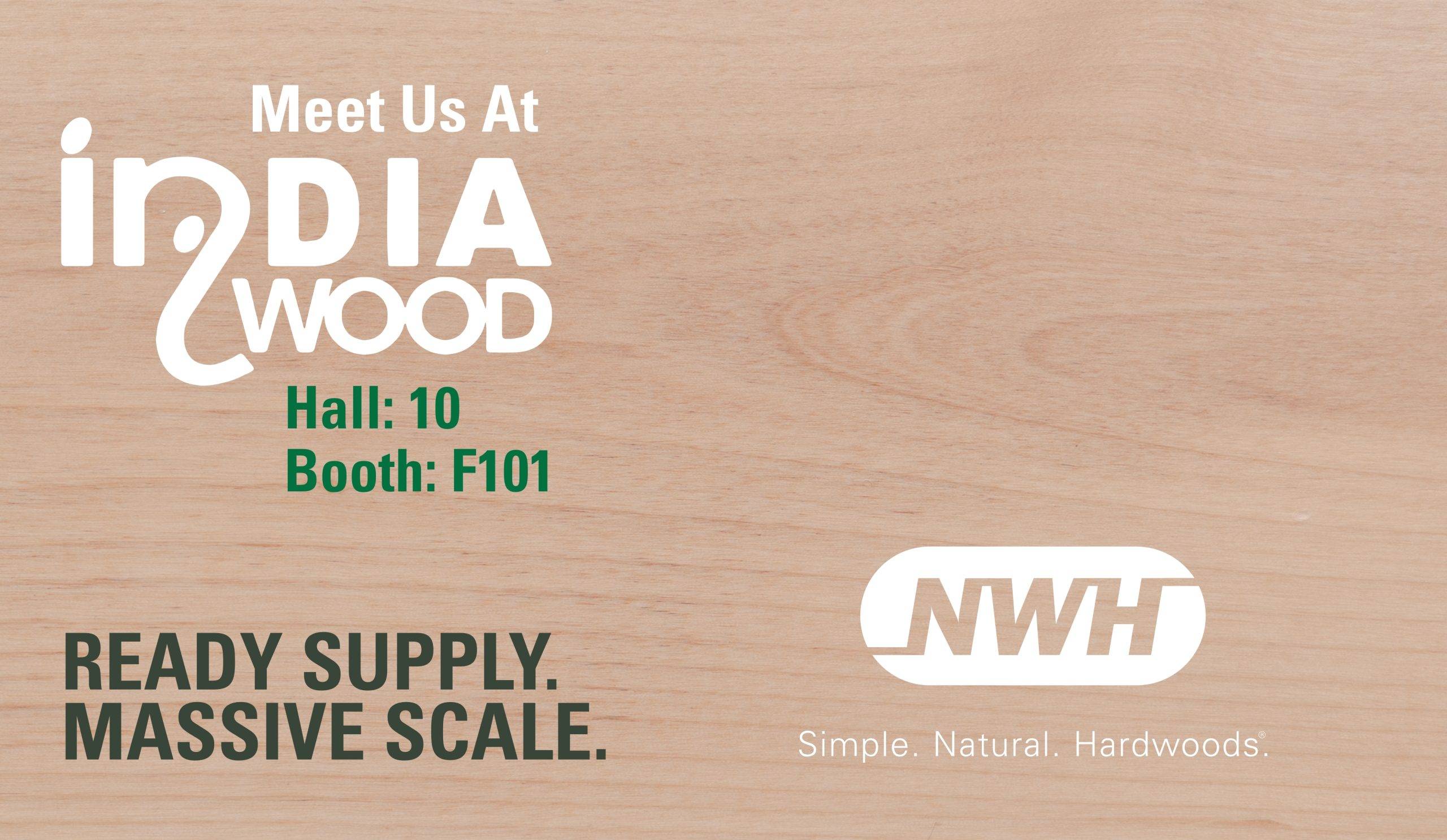Revitalizing Red Oak with Cerused Finishing
Back in the ‘70s through early ‘90s, oak cabinetry – often seen in a golden, “honey spiced” hue – dominated kitchens and bathrooms across the country. But, with the onset of newer design options hitting the market, including maple, cherry and engineered wood alternatives, oak started to lose some of its popularity in the building and design industry.
Now, it’s making a comeback.
Oak – particularly Red Oak – is gaining new traction, thanks, in part, to homeowners who want to add a touch of luxury and vintage appeal to their living spaces, along with a desire to connect to their past. And with oak getting back into style, so is a centuries old tradition to finishing wood: cerusing.

Image C/O Walker Woodworking
What is Cerused Wood?
Adding a touch of old-world charm to everything from accent pieces and furniture to cabinetry, flooring and more, cerusing is a technique used to highlight the detail and character of a wood’s grain. Essentially, cerusing creates a “distressed” or rustic aesthetic to the wood surface without damaging the wood.
Stealing its name from the white, lead-based pigment used in the 16th century as a European cosmetic, this “limed finish” look on wood is achieved using liming wax. A blend of clear wax and white liming paste, along with paint or an oil and plant-based blend, liming wax results in a weathered finish that accentuates the wood’s natural grain and texture.
While cerusing is becoming a popular finish look for a variety of woods, those species that offer a heavy grain are preferred – and often provide the best results. Among the most preferred species for this technique is the timeless, American classic: Red Oak.
Why Red Oak?
American Red Oak, with its white to very light brown sapwood and reddish-brown heartwood, has a lot to offer the building and design industry – and with that, cerused style applications.
Cerusing is used to emphasize the natural grain and texture of the wood – and Red Oak delivers a beautiful finish with its straight grain and coarse, uneven texture.
Additionally, Red Oak works well with a variety of stains and finishes and doesn’t blotch – or absorb stain unevenly – like some woods, such as birch and maple. Red Oak offers a particularly beautiful finish when stained with darker colors as the wood’s open pores absorb more stain, which further highlights the Red Oak’s grain pattern.
On-Trend Style:
Cerused, stained or painted, Oak isn’t the same golden-toned style from decades ago. Instead, it’s a versatile hardwood that can be used in any design style, including:

Image C/O Canyon Creek Cabinet Co.
- Victorian: A style accented with details like carvings, corbels and decorative posts, typically featuring organic shapes and spiral flowing designs, as well as glass and mirrored doors.
- Traditional: A style dominated by neutral stain or paint colors, as well as thick moldings, few ornamental details, and raised panel doors and drawers.
- Industrial: A style characterized by practicality – functionality reigns over elaborate decoration.
- Transitional: A style that blends traditional with clean, modern designs, oftentimes taking simple styles and upping the game with ornate or sleek hardware.
- Contemporary: A style focused on simple, with hard edges, as well as colors and textures that speak for themselves.
- Arts & Crafts: A simple, yet intricate style that often utilizes reddish undertone stains.
Although it may have lost some popularity with the rise of other woods, Oak is quickly making a comeback to “new style” thanks to trending finishing techniques and popular design styles.
Share This Post!








